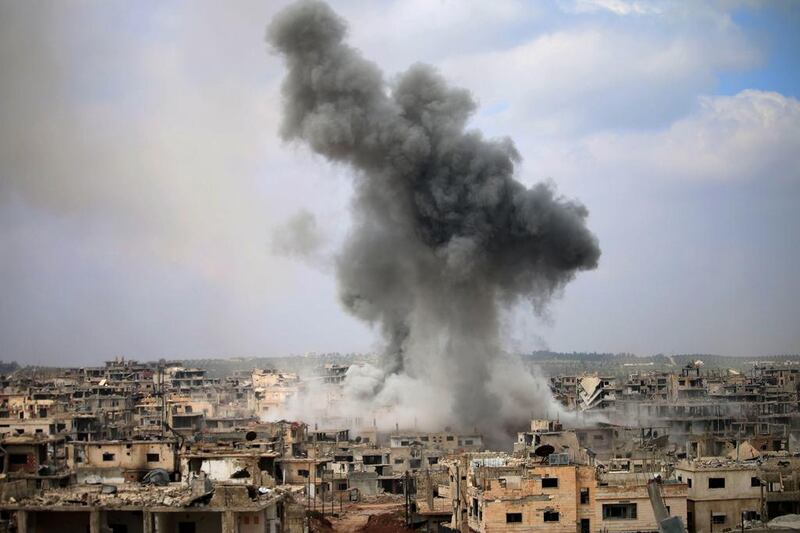Jihad is a central element of the sectarian narrative circulating today in Syria. Yet jihad is also at the crux of the discourse held by Lebanese Hizbollah and a major driver for its militants fighting across the border.
In Syria, jihad appears to have become above all the prerogative of radical Sunni groups such as ISIL and Hayaat Tahreer Sham (also known as the former Nusra affiliate to Al Qaeda).
Jihad has allowed these organisations to attract tens of thousands of fighters. According to the International Centre for the Study of Radicalisation, more than 20,000 fighters joined the conflict in Iraq and Syria, while other experts put this figure closer to 38,000 fighters. Concomitantly Shiite militias from Iraq, Afghanistan and Lebanon have also deployed in Syria to buttress the Assad regime.
In May 2013, when justifying the involvement of the militant group in Syria, Hassan Nasrallah, Hizbollah’s secretary general, said that “we are not only ready to declare jihad [in Syria]; in fact with a couple of words you would find tens of thousands of mujahideen heading to these fronts”.
Experts believe that 6,000 to 9,000 Hizbollah fighters are deployed in Syria.
While Hizbollah was previously known more as a resistance movement, its involvement in Syria, which was framed as a war against the takfiris, brings its jihadist roots to the forefront. The organisation’s 1985 open letter defined the group as a jihadist movement that belonged to the larger “Muslim Ummah”. Like other jihadists groups, Hizbollah has relied on religious references and text to provide a rationale for its call for jihad.
Both Sunnis and Shiite religious narratives used in the Syrian war are reminiscent of a centuries-old enmity.
In a 2016 speech, Mr Nasrallah said events in Syria proved the lesson that blood triumphs over sword.
This narrative finds a strong echo within Hizbollah’s fighters. In a previous interview I conducted, a young Hizbollah fighter argued that “what is happening in Syria today is a repetition of what happened over 1,000 years ago. We will not allow that to happen another time”.
Other fighters have also invoked the protection of Shiite religious shrines, namely that of Sayyidah Zeinab, to justify their involvement in Syria.
“There is no better satisfaction than dying fighting to protect the religious shrine of Zeinab,” another Hizbollah fighter told me.
Hizbollah fighters say they have received a religious command before going to fight in Syria.
“My place is secured in heaven if I die [in Syria] and my family taken care of,” said Abou Ali, a commander who has been deployed several times in Qussayr, Qalamoun, Damascus and Aleppo.
Experts believe that more than 2,500 Hizbollah fighters have been killed in Syria and more than 7,000 injured. As the number of dead mounts, the discourse of Hizbollah fighters is further radicalising. “Among rebel ranks, there are no more civilians,” said one fighter.
Reducing the conflict there to a battle within Islam holds great dangers. Hizbollah thinks it has the upper moral ground in the Syrian conflict, where its fighters are fanning the sectarian fires and prolonging a conflict that is wreaking havoc in the region where the sectarian divide now runs wide.
Mona Alami is a non-resident fellow at the Rafik Hariri Centre for the Middle East





